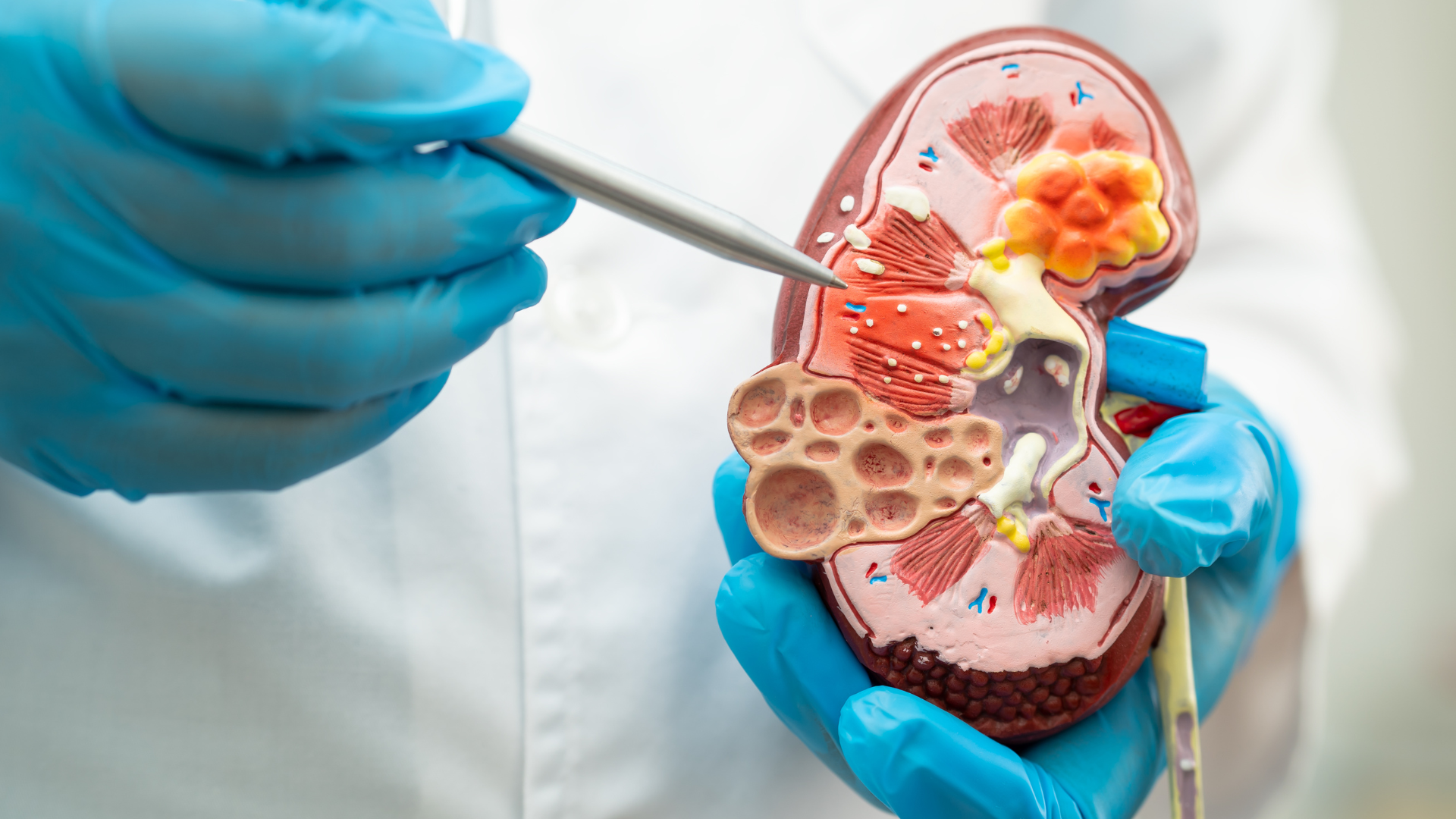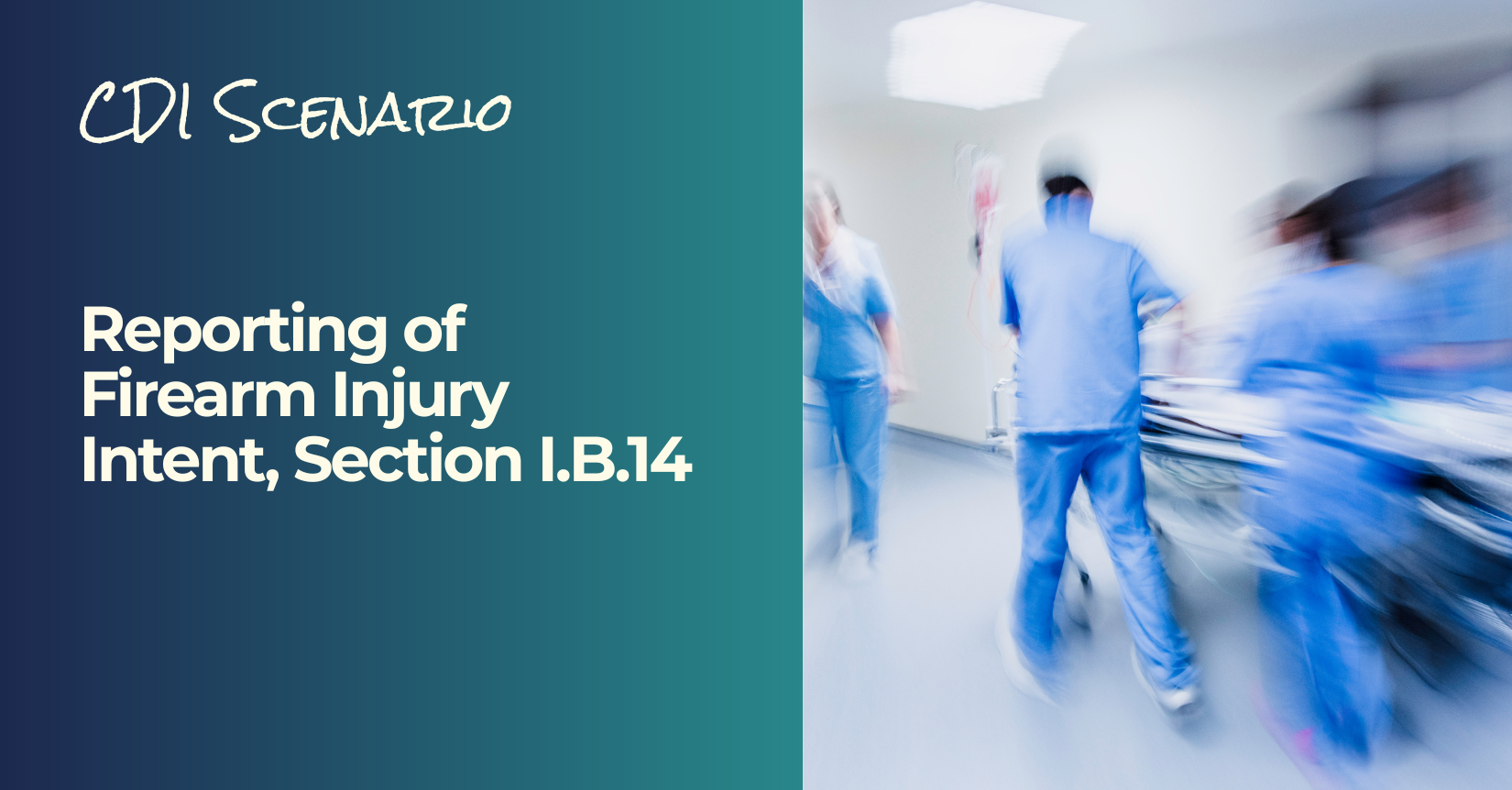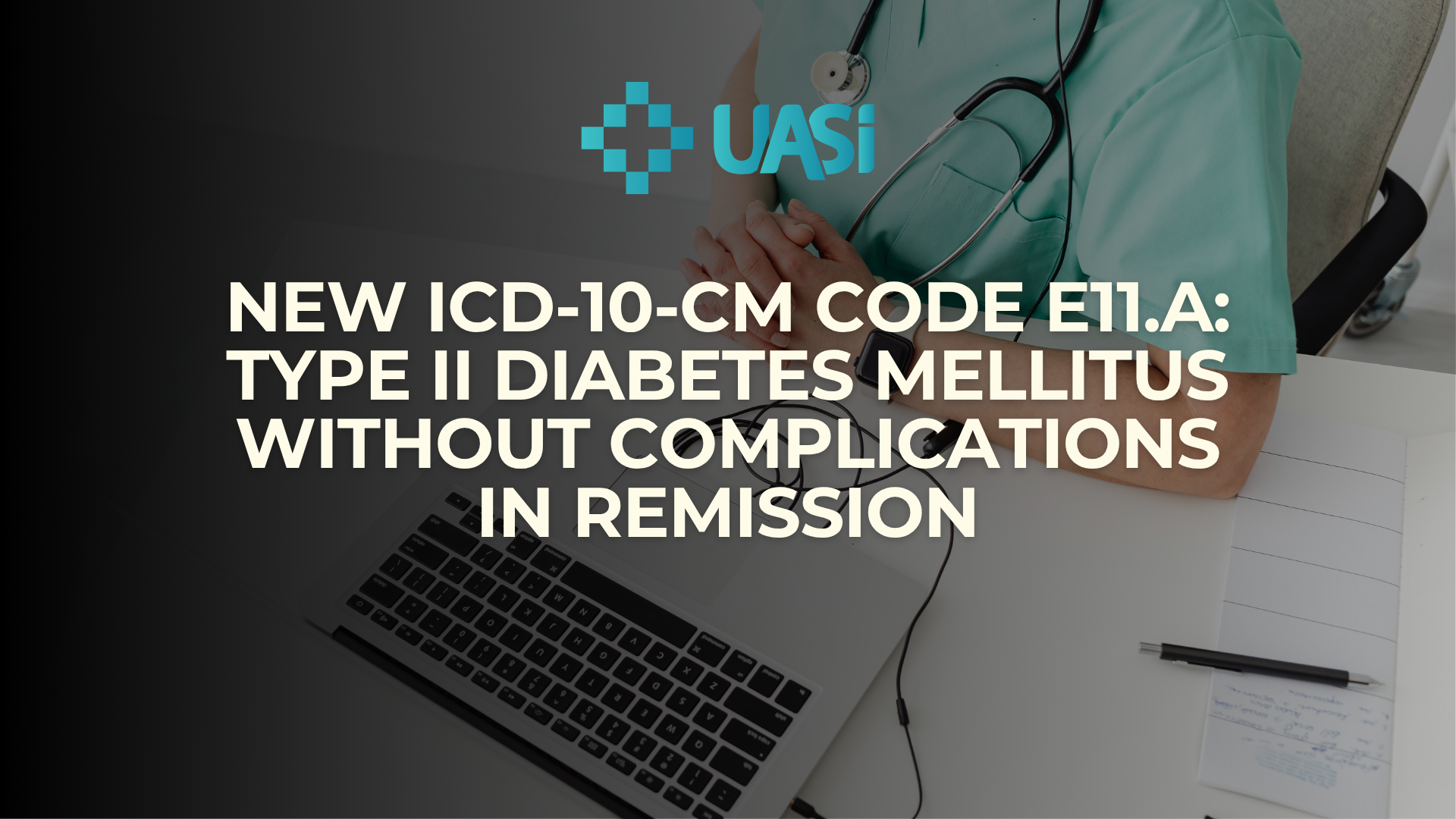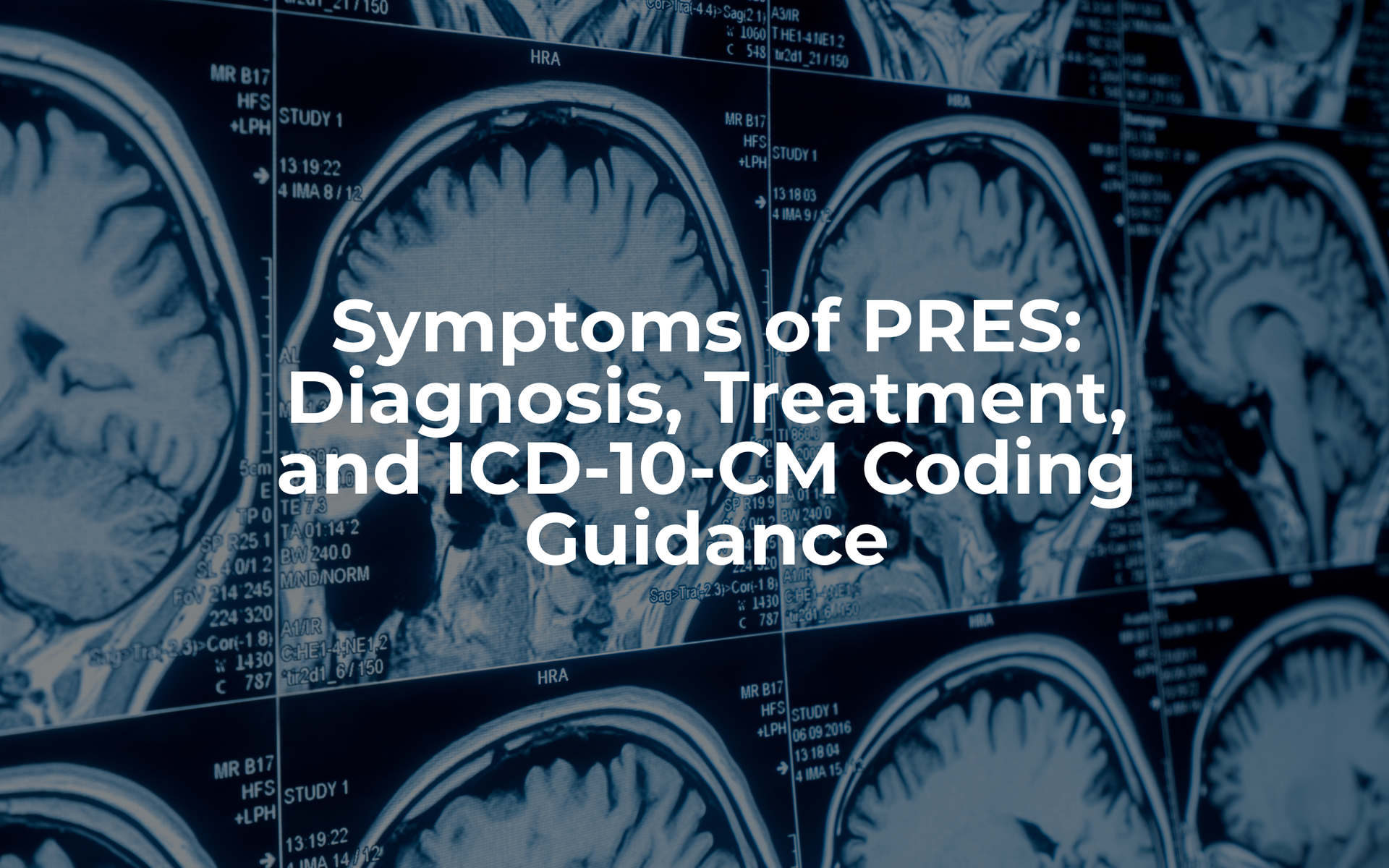Initial vs. Subsequent Encounter
July 22, 2025
ICD-10-CM Tip: Initial vs. Subsequent Encounter
Many coders still struggle with assigning the seventh character for initial and subsequent encounters. Using these correctly ensures accurate reimbursement and avoids claim denials.
When assigning the 7th character for injuries or conditions like fractures, sprains, or open wounds, do not confuse “initial” with the patient’s first visit.
- Initial Encounter (A) = Active treatment is still being provided – “surgical treatment, emergency department encounter, and evaluation and continuing treatment by the same or a different physician.”
- Subsequent Encounter (D) = The patient is in the healing or recovery phase, receiving routine follow-up care - “cast change or removal, an X-ray to check healing status of fracture, removal of an external or internal fixation device, medication adjustment, and other aftercare and follow-up visits following treatment of the injury or condition.”
In ICD-10-CM, “initial” vs. “subsequent” is about the type of care being provided, not the location (like inpatient vs. outpatient)
- Use 7th character “A” (Initial Encounter) when the patient is receiving active treatment for the injury – regardless of whether they’re in the ER, surgery, or admitted inpatient.
- Use 7th character “D” (Subsequent Encounter) once the patient is receiving routine aftercare for healing – even if they are still in the hospital (e.g., rehab or post-op management).
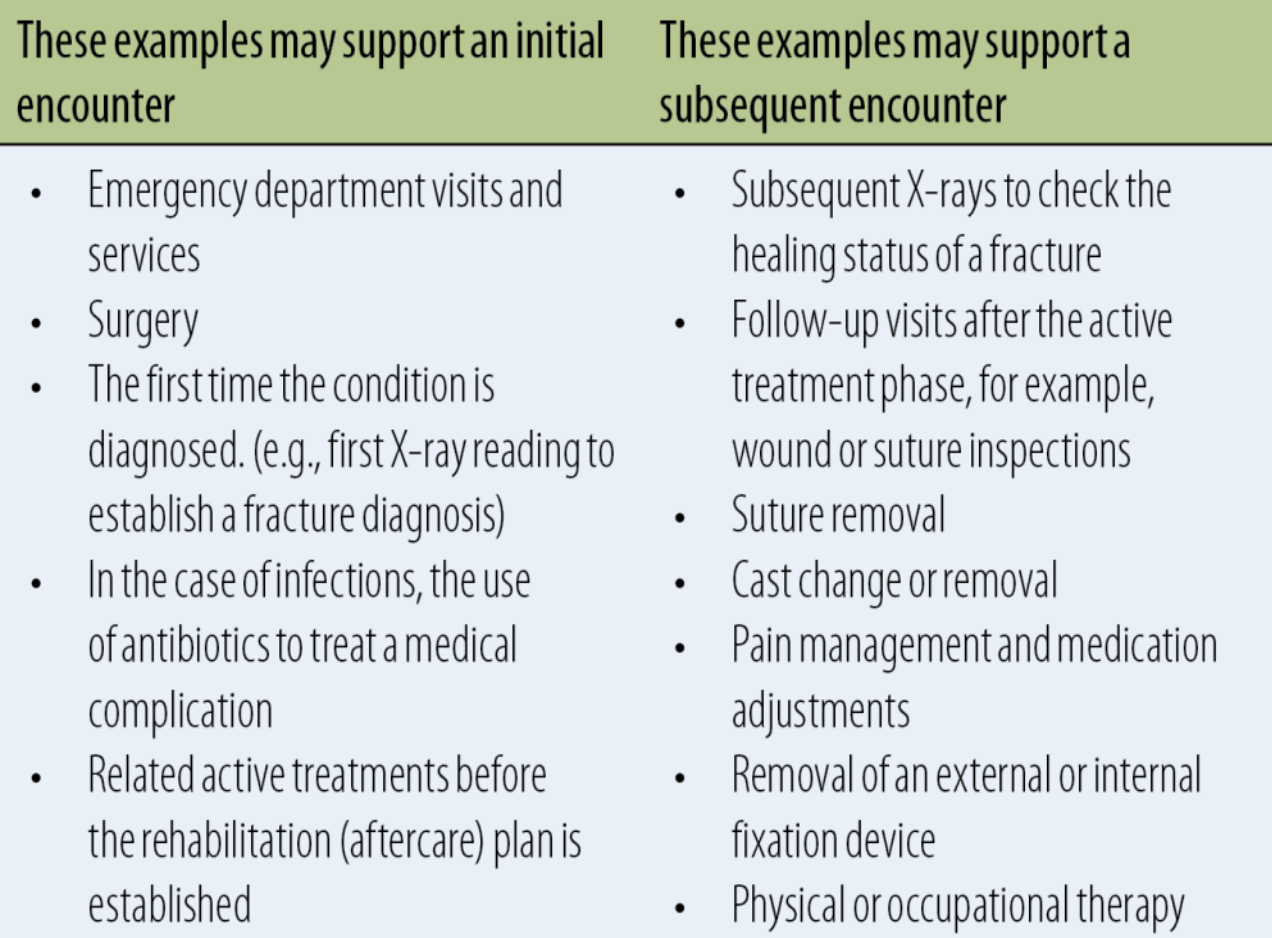
Resources:
- AHA Coding Clinic, first qtr. 2015, pages: 3-21
- 2022 ICD-10-CM Official Guidelines for Coding and Reporting
- Resolve Initial vs. Subsequent Encounter Misconceptions - AAPC Knowledge Center

